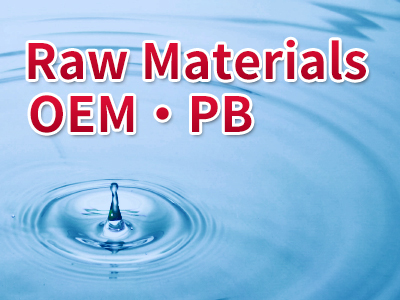Articles
Angiogenesis in cancer

Angiogenesis performs a critical role in the development of cancer. Solid tumors smaller than 1 to 2 cubic millimeters are not vascularized. To spread, they need to be supplied by blood vessels that bring oxygen and nutrients and remove metabolic wastes. Beyond the critical volume of 2 cubic millimeters, oxygen and nutrients have difficulty diffusing to the cells in the center of the tumor, causing a state of cellular hypoxia that marks the onset of tumoral angiogenesis. New blood vessel development is an important process in tumor progression. It favors the transition from hyperplasia to neoplasia i.e. the passage from a state of cellular multiplication to a state of uncontrolled proliferation characteristic of tumor cells.
Neovascularization also influences the dissemination of cancer cells throughout the entire body eventually leading to metastasis formation. The vascularization level of a solid tumor is thought to be an excellent indicator of its metastatic potential.
Anti-angiogenesis as a strategy against cancer
As early as the 1970s, Dr. Judah Folkman of the Harvard Medical School suggested inhibiting new blood vessel formation as a way to fight cancer. The malignant tissue would be deprived of its oxygen and nutrient supply, as well as be unable to eliminate metabolic wastes. This in turn would inhibit tumor progression and metastatic progression that accompanies most advanced cancers. These are the main steps of the angiogenic process that can be interrupted:
- Inhibiting endogenous angiogenic factors, such as bFGF (basic Fibroblast Growth Factor) and VEGF (Vascular Endothelial Growth Factor)
- Inhibiting degradative enzymes (Matrix Metalloproteinases) responsible for the degradation of the basement membrane of blood vessels
- Inhibiting endothelial cell proliferation
- Inhibiting endothelial cell migration
- Inhibiting the activation and differentiation of endothelial cells
References
- Folkman J. Role of angiogenesis in tumor growth and metastasis. Semin Oncol, 2002 Dec 29 (6 Suppl 16), 15-8
- Daly ME; Makris A; Reed M; Lewis CE. Hemostatic regulators of tumor angiogenesis: a source of antiangiogenic agents for cancer treatment?. J Natl Cancer Inst 2003 Nov 19, 95(22), 1660-73.
- Heath VL; Bicknell R. Anticancer strategies involving the vasculature. Nat Rev Clin Oncol 2009 Jul 6(7), 395-404.
- Chung AS; Lee J; Ferrara N. Targeting the tumour vasculature: insights from physiological angiogenesis. Nat Rev Cancer 2010 Jul, 10(7), 505-514.
- Ellis LM, Hicklin DJ. VEGF-targeted therapy: mechanisms of anti-tumour activity. Nat Rev Cancer. 2008 Aug;8(8):579-591. doi: 10.1038/nrc2403.
- Zeng G, Taylor SM, McColm JR, Kappas NC, Kearney JB, Williams LH, Hartnett ME, Bautch VL. Orientation of endothelial cell division is regulated by VEGF signaling during blood vessel formation. Blood. 2007 Feb 15;109(4):1345-1352
- Hidalgo M, Eckhardt SG. Development of matrix metalloproteinase inhibitors in cancer therapy. J Natl Cancer Inst. 2001 Feb 7;93(3):178-193.
- Avraamides CJ, Garmy-Susini B, Varner JA. Integrins in angiogenesis and lymphangiogenesis. Nat Rev Cancer. 2008 Aug;8(8):604-617. doi: 10.1038/nrc2353.
- Cook KM, Figg WD. Angiogenesis inhibitors: current strategies and future prospects. CA Cancer J Clin. 2010 Jul-Aug;60(4):222-43. doi: 10.3322/caac.20075.
- In-sook Ahn; Steven Grekin; Stephen Verral; John Croft. An Ethanolic extract from a shark having potent anti-angiogenic activity: its anti-angiogenic mechanism and clinical application. Poster session: March 9, 2006 San Diego, California, U.S.A.
- Satoru Furukawa. Shark lipids for malignant diseases. December 12, 2005 Annual Meeting of Korean Society of Cancer Prevention.
Related Resources
-

Macolipin (Lipid chiết xuất từ cá mập)
-

Lipid từ đại dương và Lecithin lòng đỏ trứng

